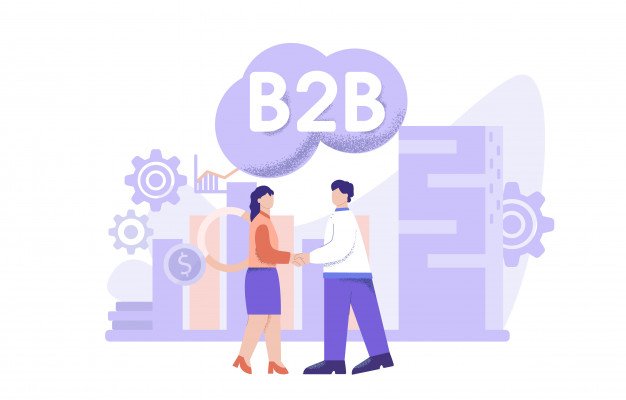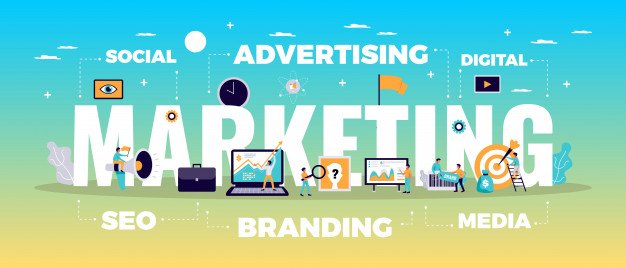Category: Marketing
ContentRally is a leading source of reliable news and trending topics on Marketing. Get hard-to-find insights and advice on Marketing from industry-specific leaders.

Top 10 B2B Marketplaces to Grow Business!
B2B marketplace has become the best platform for wholesalers, retailers, or buyers to trade. It has helped so many sellers to reach their expansion selling goals. To sell your product or services through these platforms, you will have to create an ID on a particular website. The platform will work as a broker or commission agent. The best thing is that you can sell your product or services worldwide. Here we have listed the top 10 platforms, which will help you to grow your business. Here are the top 10 B2B marketplaces to grow business: 1. alibaba.com: Alibaba.com stands at the top of this list because it is considered the best leading b2b platform. Jack Ma and Pang Li, these two Chinese people founded this marketplace 18 years ago and since then offers a broad range of B2B services all over the world. It is also considered the best platform for related services, including B2C and C2C. 2. eWorld Trade: Eworld trade is also one of the best leading trade platforms for today's generation. It is because it has made the process more reliable, worthy, and secure. The well-established trade platform also offers a broad range of eCommerce services. 3. TradeLeaves: TradeLeaves makes Cross Border and Domestic Trade simple through its online platforms comprising of Marketplace, Business Listing, Information Services (BLISS), and Classifieds. TradeLeaves user-friendly digital platforms make increased visibility and exponential growth a few clicks away. TradeLeaves supplements the online platforms with its own professional services and escrow services as well as third-party services. Simply put, TradeLeaves makes it easy to buy and sell anywhere in the world—cross border or domestic. 4. EC21: The Korean counterpart also offers a broad range of marketing services all over the world. The head offices of EC21 are located in China, Russia, Malaysia, and India. Over 2 million people are engaging in services, including overseas marketing, trading educational seminars, and national cooperation. 5. TradeIndia: TradeIndia is an India-based marketplace platform that stands next to IndiaMart. It has participated in national and international trade events and offers a vast range of services, including DialB2b, Call Me Free, trade alerts, credit reports, and lead reports. 6. IndiaMart: One of the most India-based leading marketplaces is Indiamart, which is continuously growing since its foundation. There are more than 1.7 million visitors recorded on this platform and taking services like B2B and B2C. 7. En. Ofweek: The China-based marketplace is still growing but also has gained so much popularity in the electrical components trade all over the world. The fresh B2B marketplace contender is known as an in-depth reporting marketplace for its sellers. If you want to expand your business in China, you first know everything about the Chinese market. Click here to access china insight. 8. Global Sources: One of the most leading marketplace platforms of some prime countries offers a broad range of import/export services. In the countries where it is working, it has claimed millions of visitors a month and also offers a unique role in the GDP growth of those countries. 9. DHGate: Other China-based service providers have more than 40 million products listed on their trading platform. There are more than 1 million Chinese suppliers are trading with over 10 million buyers of 230 countries. DHGate is considered the most reliable platform that offers valuable benefits to both the buyer and the seller. 10. Amazon: Amazon was introduced as an e-store for purchasing several goods for personal or commercial use. The company noticed that people are showing a lot of interest in their service then they decide to start the B2B process, and now it is one of the best growing and leading trading platforms of India. Conclusion: Here is the list of the top 10 B2B marketplaces that are working all over the world. These platforms are considered the most trustworthy service provider. One can choose any of the above-listed platforms to start a new journey of earning more and more profit through the online selling method. Read Also: Why Should You Hire a B2B Digital Marketing Consultant? How a B2B Payment Solution Can Aid Your Ecommerce Company? The Right B2B E-Commerce Platforms to Sell Your Used Machinery
READ MOREDetails
6 Steps to make Your Trade Show a Success
If you know the market activities known as the trade show, then you know how important they can be to develop a company. Trade shows provide a variety of resources including growing knowledge of the brand, networking with potential buyers, and making sales. Trade shows mark a major investment for a company. Therefore, in the marketing field of expertise, you need the statistics to show that this is a successful strategy. Here are six tips to ensure a good trade show: 1. Find Objectives and Set your Budget The first step to succeeding in a trade show is to know whether you want to demonstrate. You definitely won't be watching the same show based on the primary goal. However, it is important that you bear in mind the industry's biggest trade shows. You should walk step by step through the goods you want to make their debut or display at the trade show. Never endanger the reputation of your business for inexpensive short-term deals. What could appear inexpensive and enticing now may be dangerous in the long run? You can have your budget set up now. 2. Prepare your staff and teams It's important to have a strong sales staff and we would recommend you pick the best out of the squad for the trade show. Work them out carefully; clarify explicitly the priorities and stakes involved. ExpoMarketing is having too much competition in the market so you really need to choose the best staff for your trade show. You have two choices, whether to put in an in-house group or to hire an organization with event workers that have expertise with running trade shows. Whatever you decide, realize that your company will be the face of the employees working your booth. 3. Product Demos It's important to show your product and be prepared to allow the participants to test it out. Customers want something to see, touch, or even try before buying them. Send them a custom email to thank them for coming, and give them more detail about your company. You can also make a meeting. It's very essential to do so when everybody still considers each other. A strong trade show is easy to bear fruit if you respond quickly. 4. Giveaway free products People enjoy free things and plan to win quite a bit at trade shows. you can attract a crowd with anything as basic as freshly baked cookies, or you can go a step better with discounted items such as markers, shirts, notebooks, or water bottles. It will help crack the ice, open discussions, and ideally, prospects that are eligible. Try selling something that is important to your business. 5. Take Lead notes Your business card is an opportunity to expand your discussion past the trade fair, and a clear reminder of who you are. It's a must for skilled people. You feel out of place without brochures and people are less likely to be taking you seriously. 6. Follow Up Refer to the lead notes to craft customized messages that answer each future customer's unique needs and wishes. Know your primary aim that must be to transform the implementation of trade shows into long-term market partnerships. Read Also: What Type Of Inflatables Should You Opt For At Your Business Event Getting a Return on Investment From Using a Trade Show Booth A Well-Oiled Trade Show Machine: The Ones Running the Show
READ MOREDetails
3 Easy Ways to Grow Your Email List
The email marketing industry is expanding and there is growing competition between brands: they all want to get people’s attention. Sometimes, acquiring more subscribers seems hard. If you are looking to grow your email list, we have three easy ways maybe you never thought of. Whether you offer a service, product or content is the product, use these tips to add more subscribers to your database and become more successful at email marketing. Why you should grow your email list There are good reasons to build your email database. It can be an instantaneous way to reach the people who want to hear from you. Also, it’s cheaper than advertising or mass mailings. Every marketer wants a large email list which is understandable. In general, the more people you reach, the better results and this has never been more true than with emails. The typical ROI for email is $42 for every $1 spent. However, before you try any email list growth strategy, remember it’s not always about the numbers. You want true engagement and a long-term relationship with your audience. To build that, focus on adding real subscribers to your list – people who genuinely want to connect with your brand. How do you do that? Let’s get into three ways to grow your email list without much effort. Is it easy for someone to sign up? Many organizations and freelancers have only one sign-up form and you’d be surprised how much you have to search the website to find that form. So, the first tip: make your email sign-up visible and easy to find. For instance, you could place it at the top of your website and not buried down by the copyright notice. Also, avoid making the text so small that someone can’t read it. Instead, let your signup form be the first thing people see when they land on your platform. Are you promoting your email list on your social media channels? Maybe you’ve been working hard to gain followers on Facebook, Instagram, and Twitter. There’s certainly inherent value in this, but a lot of marketers make the mistake of not cross-promoting channels. Who’s to say that someone can’t follow you on Facebook and be a subscriber to your email list? Just remember that people will frequently leave social media channels for one reason or another. You don’t want them forgetting about your brand and what you offer, so do your best to get them on your list. Post periodically on social media and invite people to subscribe to your emails. Your newsletters’ content should have real value and be unique from your website or social media content. This is a great incentive to gain an email audience. Plus, you can think outside the box to gain new followers. Maybe you can run a contest or offer a freebie, such as an e-book to anyone who signs up – whatever you think would entice your audience. Do you include an email subscribe button in every email you send? Word of mouth is the best marketing. If someone on your list really likes your email and forwards it on to a friend, they need an easy way to subscribe. A “subscribe” button makes it simple by saving them the trouble of looking you up, going to your website, and finding your form. So, at the end of every email you send, include a call-to-action. It could be as simple as: “Did you get this email from a friend? Get yours” + “Subscribe” button. The more convenient you make it for people to subscribe, the faster your email list will grow! Also, it doesn’t hurt to encourage your subscribers to forward your email. Some of them will do that and that’s a great way to grow your audience. It’s not all about numbers Now that we’ve gone over a few easy ways to grow your email list, it’s important to keep in mind that it’s not all about numbers. There is another aspect to growing your campaign: email list quality. Gathering lots of subscribers is great for email marketing, but you have to make sure those subscribers are real. You may be asking, “Well, why wouldn’t they be?” In the world of email marketing, there are quite a few types of emails that degrade your sender reputation. A sender reputation is a score that every email sender has. It’s the rating Internet Service Providers use to determine your behavior as an email sender. Some of the factors that influence your sender score are: your bounce rate your overall engagement: open and click-through rates are vital metrics the number of spam complaints and unsubscribes you get Bad email addresses you could have in your list All these factors are in direct connection with the quality of your email list. Unfortunately, every organization or marketer will acquire some bad email addresses over time. Some of the most damaging yet prevalent ones include: Fake email addresses: for a number of reasons, people sometimes provide fake email addresses. Sometimes they just want to take advantage of a freebie and have no intention of being a subscriber. Abuse emails: some people are malicious and others just careless. Abuse email owners have a habit of marking emails as spam, even those they signed up for. You don’t want these people on your list because they will hurt your sender reputation. Temporary email addresses: would you believe there are websites that exist for the sole purpose of generating temporary emails? These email addresses are sometimes called disposable because the person uses them for a day or two and never again. Then, they only cause your bounce rate to go up. On top of these, we can’t forget there’s always natural decay of the list. People simply change email addresses. Some people use their school or work email and they graduate or quit. You must get those email addresses off of your list. Use an email verifier to keep your database clean Thankfully, there is a healthy way to grow and maintain your list. The first thing is to never buy or trade email addresses to add to your list. First of all, it’s illegal to email people without their consent. Furthermore, a purchased list isn’t likely to result in anything positive and most likely the people you add will mark you as spam. The simplest way to keep your list healthy is to: The first clean it in bulk using an email verifier then, install an email verification API on your sign-up forms. Clean your list in bulk If you already have a substantial number of contacts in your list, but are not sure about their validity, run your list through a bulk email verifier. The process is simple and doesn’t take much time: you upload your list into the system and get it back clean within hours or even minutes. Install an email verification API This simple piece of software checks every new email address in real-time. It grants permission to good emailers and keeps out any of the problematic accounts mentioned above. Once your list is clean, consider adding the API to all your sign-up forms to ensure it stays in good shape. The sky’s the limit You would be surprised what a difference email marketing makes. It’s the most personal way to reach people and is an incredible tool to communicate the story of your brand and service. Using careful planning, creativity and email verification tools you are on the right path to growing your email list and getting good results. Read Also: How to Integrate Email Marketing With SEO Why Email Marketing is the BEST Digital Marketing Outreach in Singapore
READ MOREDetails
Required Content Marketing for Your E-Commerce
According to HubSpot, in 2019, 75% of the world's companies used content marketing and found it more efficient than other ways to attract customers. Small businesses with up to five employees predominate among them. The fact is that young companies with budget deficits, in contrast to large market players, prefer to invest in useful content, offering users detailed and objective reviews. Popular sites for content marketing: Blogs on a store's website or a third-party site; video channels; thematic forums; affiliated websites. A blog on an E-Commerce site may include product reviews, sales leader ratings, interesting case studies, recipes and application examples, detailed answers to customer questions, stories about creating a product line and other useful content that will show your expertise in this subject. YouTube channel is an absolute must-have for shops, whose products can be spun in the hands, show in work and express their impressions. For today YouTube is a search engine where you can find answers to almost any questions. Tell your customers which bike is best for the city and tires for the ice. And you'll notice how customers will reach out to you. Thematic forums and partner sites are the right places to post quality content, where you can demonstrate expertise in your niche. User-generated content of the E-Commerce E-commerce is an excellent platform for generating content by users and customers. Reviews, Q&As, photo and video reviews of products provide an opportunity to receive unique and useful content almost for free. It's enough only: simplify registration; add authorization through social networks; abolish premoderation; motivate users to communicate and express themselves; ask to bark, share in social networks; provoke discussion; to give bonuses for comments or reviews. The advantage of content marketing can be considered an increase in the image and customer loyalty due to the trust in the expert opinion of the store. With the same level of traffic to useful content and to the selling page, the content gives the best conversion into sales. If your niche is not yet engaged in content marketing, you have a great opportunity to become an expert and leader in their field. The disadvantage of this method of attracting clients in high labor costs and the long-lasting effect of investments. But during the regular publication of quality materials, the cost of each client involved is constantly falling, which makes content marketing profitable in the long term. Criteria for the effectiveness of content marketing Google Analytics, together with E-Commerce reporting, allows you to track all quantitative and qualitative indicators of content marketing efficiency: viewings; malfunctions; time on the site; number of subscribers; likes, reposting, comments; returns to the site; lids and sales; conversion rate; marketing costs. Sales and lids are just one of the criteria for efficiency. Much more emphasis is placed by experts on the involvement of the audience, which is subsequently converted into sales. Read Also: 7 Proven Marketing Tactics to Increase your ROI in 2018 Creating Successful Mobile Games: What You Need to Know
READ MOREDetails
What to Consider When Starting A Marketing Agency
Marketing is a competitive field, and if you want to start your own agency, you need to make sure you have the right stuff to compete. There’s a lot of stuff to consider when starting your own firm. For instance, what services will you offer? What type of businesses will you cater to? Will you build your own website or outsource it? What sort of marketing agency hosting will you use? What to Consider When Starting A Marketing Agency It seems like a lot, doesn’t it? For this reason, we’ve created a simple guide to help you get started building your marketing agency. Read on to learn what you need to get started: To begin with, you need to make sure you have the right stuff to run an agency. To start a marketing firm, you should be adaptable, have a desire to learn, and amazing communication skills. Next, you need to decide what is going to set your agency apart from your industry competitors. The best way to figure out what will make your marketing firm unique is to start by asking yourself some questions: 1. What can you specialize in? Some services your agency can specialize in are: Search engine optimization (SEO) Email Marketing Content Marketing Pay-per-click (PPC) advertising Event Marketing Guest Blogging 2. Will you specialize in more than one thing? It’s a good idea to start small and specialize in one or two services; however, the more services you offer to clients, the more desirable your agency will be to potential customers. This is because people tend to like to be able to get all their needs met in one place. Utilizing marketing automation solutions could make it simple for you to provide a variety of marketing services to your customers. All-in-one marketing tools like digital marketing software for agencies will also enable your staff to perform more effectively and successfully. 3. Will you cater to B2B companies or B2C companies? B2B is short for business-to-business. It refers to companies that sell products or services to other companies. B2C is short for business-to-consumer. It refers to companies that sell products or services directly to consumers. Once you’ve figured out what services you’re going to offer and what type of businesses you’ll cater to, it’s time to identify who your target market will be. Ask yourself: 4. What market are your competitors targeting? Who are their customers? You don’t want to go after the same market as your competitor, or the same customers when you’re first starting. For instance, if your competitors have lots of eCommerce clients, you may want to choose a more underserved market like real estate. 5. What specific demographics can you target? It’s important to know not only who needs your service but also who is most likely to buy it. Consider the following factors: Age Location Gender Income level Education level Occupation Ethnic background. Now that you know what services you’re selling and who you’re selling them to, its time to write a business plan. Your business plan should have several components: The goals for your business. Predictions for your finances and cashflow. Forecast for your business activity. Outline of which revenue stream(s) you’ll utilize. Description of your target audience and how you intend to reach them. Finally, we arrive at the last part: finding clients. You may feel like the best thing to do is to get as many new clients as quickly as possible. Instead, it would help if you focused on retaining clients. It is much harder and more expensive to acquire new clients, then it is to keep existing clients. So how can your marketing agency find and retain clients? Find clients by: 1. Networking Networking can be done by attending industry events, trade shows, and conferences, participating in networking sessions, posting and sharing content on social media, participating in LinkedIn groups and discussions, as well as sharing information on relevant business forums. 2. Offer Free Trials Free is a golden ticket word for most people. Offering your agency’s services for free will help you build a portfolio while showing potential clients what you can do. 3. Referrals Once you’ve acquired some clients, use them to expand your client base by asking if their customers or suppliers need your services and letting them know that your firm is available. 4. Promotion Create a website, use social media, and design promotional material to market your marketing services. Retain clients by: 1. Making sure everything your firm does is client-focused. 2. Document all your work and file reports. 3. Keep abreast of the latest changes and innovations in the industry. 4. Approach your work with creativity. Read Also: How To Choose A Practice Management Software For Your Law Firm 5 Ways Construction Businesses Can Gain New Clients
READ MOREDetails
Why Should You Hire a B2B Digital Marketing Consultant?
With the growing trend in the domain of digital marketing, if you want to stay ahead in the competition, it is suggested to hire a b2b digital marketing consultant. Hiring a consultant is often the best thing for the business if you are looking to have the best outcomes. With the growth of digital marketing, it has become important to not miss out on the train and catch the growing market. It has become a necessity since your competitors are already utilizing the best features of digital marketing to win the market share. As we have known how important digital marketing is to your firm, it is important to know the added benefits of having a consultant. Knowing what they bring to the table is very important for heading in the right direction. Perks of having a B2B digital marketing consultant on-board Every B2B business needs to understand that there is immense scope for growing online. A good and credible b2b marketing agency can make a world of difference when it comes to reaching new customers and increasing sales figures. They can help you optimize your verticals and plan campaigns in a manner that delivers the best results. The value that a consultant adds to the firm is unmatchable. Often regarded as the jack of all the trades, the consultants from the best universities bring forward huge experience. The added network effect along with the rich know-how about the latest technologies is why you must hire them. Instead of focussing only on immediate growth, the consultant's primary focus is to create a niche and a brand image for your firm. More than just providing the solution, they provide a long-lasting result to your firm, that enhances the image of your firm. To explore more into the benefits of a digital marketing consultant, let us understand them in detail. Growth Hacking: If you are looking forward to having a growth hacker in your team, there is no better alternative than a consultant. With the rich experience across all the domains, it is very necessary to have them on your team. They also bring into the varied culture and the unique factor of learnings from across the globe that enhances your team’s outlook. Short term goal achievement: You can easily achieve the short-term goals if you are well equipped with the best consultant. If you are not having the best consultant; you might miss out on the short-term vision and fail to capture a larger market share. Staying with the trend: Having a consultant is often the best way to implement the latest trends in the domain of digital marketing. If you are looking forward to capturing the market share, it is often recommended to be the first mover. Having the first-mover advantage will let you attract more consumers. It shall reduce the monopoly of your competitor thus keeping you ahead in the curve. Knowledge of every market: Do you know why consultants are one of the highest-paid professionals? It is because of their extensive knowledge about the outside world. Having outside knowledge about real-world happenings makes them unique in a lot of ways. They have been employed in different companies which have a wide range of cultural variation. It gives them the eye for scrutiny and a critical view of the organization. Having a consultant in your team can lead to hijacking the market and eventually increasing the customer share. If you are looking to improve your firm’s standing, you must not hesitate to hire a digital marketing consultant. Omnichannel B2B Marketing (...Yes, You Might Have to Do It All) In today’s fast-moving digital landscape, one marketing channel alone simply won’t be enough. You’ve got to be everywhere! I mean everywhere! This includes mail, social media, search engines, content platforms, and beyond. This is what we call omnichannel marketing. It’s not just a trend anymore; it is a means of survival in the digital world. It's a must to keep up with your competition. But here’s the thing: it’s a lot harder than it seems. Especially if you do not have a consultant by your side! Align Your Channels Omnichannel marketing is all about achieving a consistent and seamless experience for your customers. No matter what platform or channel they’re connecting with you on. Whether they come across your business on LinkedIn, read one of your blog posts, or receive an email from you, the communication should be similar. It needs to feel like a single conversation with your brand. Simple right? Not so much, and here is why! Keeping Everything Connected The trickier part is making sure everything connects. If your social media messaging doesn’t mesh with what’s in an email, or if the branding on your website doesn’t align with the display ads you create, it can throw potential leads off. In fact, it can also make it much more difficult to attract new business. Since your own brand looks half-hearted, how can you take care of another brand? That’s where having a strategy that spans all these platforms comes into play. It’s not just about being active in a lot of online channels – it’s about keeping them talking in the same voice. The Experience NEEDS to be Seamless When people click on your LinkedIn ad and then land on your website, if it’s not the same feeling that they got from the ad, you might lose them. They might just bounce to another competitor of yours! Yes, the competition is tough. Omnichannel makes each platform transition feel native. Meeting your customers where they are and walking alongside them through their journey is crucial. Only then will you be able to show that you are not just selling something, but rather creating an experience! Focusing on Key Platforms Now, you might be thinking! “Do I really need to be on every platform?” The answer is yes — and no. Depending on who your target audience is and what you are planning to achieve through your channels. For example, you don’t have to stretch yourself too thin. If you are a B2B service that deals with a logistic niche, you do not need an account on Pinterest. No client of yours is reaching out to you over Pinterest! Finding the target audience, and the right platform is what a B2B consultant is an expert at! So, hire one as soon as possible! Focus on the platforms that matter most to your target audience. For B2B businesses, this might mean prioritizing LinkedIn, email campaigns, and targeted content marketing. But don’t ignore emerging channels. Depending on your niche, there could be opportunities in areas you haven’t explored yet. Finally - Do Not Overwhelm Yourself! It can seem very overwhelming when you first start with omnichannel marketing. But you don’t have to do it all at once. First, figure out where your audience is and start there… and slowly expand as you become more comfortable. The key here is to stay consistent and not try to be everywhere. This is why hiring a B2B digital marketing consultant is crucial. They are the ones who make you understand that - “Omnichannel success is a marathon, not a sprint.” Read Also: Why Email Marketing is the BEST Digital Marketing Outreach in Singapore When Will Social Media Addiction Be Considered a Mental Health Condition?
READ MOREDetails
Enterprise Content Management Solutions – How They Help You Optimize Your Business Efficiency
Enterprise content management is a great way to organize unstructured data and information of an organization. Many factors impact the functioning of ECM systems and determine their effectiveness. When managing your enterprise content solutions, you should define their processes accurately. Several service providers offer enterprise content management consulting services. These service providers understand the needs and requirements of companies in terms of managing data. Thus, can advise business owners with the right solutions. Proper ECM helps organizations to create, enrich, manage as well as deliver data and information. Business owners should identify their requirements and determine the solutions of the right enterprise management systems that will cater to those requirements. There are several solutions that such systems may include, such as management of documents, managing website content, document imaging, management of records, and management of digital assets as well as managing your business data and providing support for collaboration and management of business processes. Managing content is one of the most important tasks that organizations need to take care of. It is important to preserve data so that it can be reused for other purposes later. Preservation of data in a systematic order also ensures that it can be searched and found easily whenever required. There are a number of factors that affect the choice of a proper enterprise content management system. Some of the factors which affect the choice include, the number of people and the processes involved in the organization, technology involved, budget and so on. Keeping in mind all the required elements and choosing the right content management system will help an organization to share and edit content efficiently and in an orderly manner. Top features of enterprise content management (ECM) systems: Central Repository Document Scanning Secure Email Files Client Portal Document Retrieval Mobile Accessibility Easy Integration Automated Workflow Manager Advanced Analytics Cloud-based Accessibility Top benefits of enterprise content management (ECM) systems: Keep Track of All Your Information Reduce Operating Costs Save time Improve Customer Service Minimize Risk Document Version Control Picture an executive rushing from one client office to the next, updating the minutes of the feedback he received at the previous office on the official sheet using his iPhone or Android phone. The entries made by the executive are further accessed by employees sitting in the head office who use the details to generate reports for further information processing. This is possible with the advanced enterprise content management solutions provided by consultants who help businesses optimize their internal documents, datasheet, and content sharing capabilities. Are you aware of the latest techniques and tools being used to perfect enterprise content management? To begin with, the most important advantage of using professionally generated enterprise content management solutions is that you can be assured that the system will work at its optimum for long. What are the common types of solutions that these enterprise content management consultants use to give you highly advanced data access? Here is the list of the commonly used content sharing systems that are being used in enterprise content management these days. Content Sharing Systems that are used in ECM: 1. Drupal: The ideal content sharing system that is known for its robust page building capacities can be used to develop both internal and external websites. Professionals using this CMS for enterprise content sharing and management excel with the in-built options provided by Drupal. The best part of using this CMS is that it is an open-source system that allows the ideas of thousands of users and developers to flow into the building of your enterprise content management systems. 2. Ektron: This leading provider of content management products allows businesses to use the solutions to manage multi-websites. The framework can also be extended to allow customs control during component development by the professionals. Ektron has been used to design websites of many leading companies like Pfizer, Intel, Dove, Kellog's, Adidas, and many more. You could use the customizable features of this CMS provider to enrich the user experience of your enterprise content sharing portals. 3. MS Share Point: The software that helps streamline business processing amidst dynamic environments; MS Share Point is definitely the answer for low-cost enterprise content development services using the latest tools and features. The main advantage of using MS Share Point is that you get to leverage content to improve web traffic flow to your website and increase collaboration amongst users. Thus, in order to stay ahead of market competition, one needs to use the most recent tools and techniques through professionally generated enterprise content management solutions that will help you optimize enterprise performance. Read Also: A Guide to Choosing an Enterprise Document Management Solution Start-up Business Management: How to Reduce Risk and Guarantee Success
READ MOREDetails
Getting a Return on Investment From Using a Trade Show Booth
It's easy to find people who will swear that getting a massive ROI from a trade show booth is nearly impossible. That is not the case, by any means. Most likely, those people failed to use some of the tips in this article. Companies that have, however, have experienced massive success with their trade show booth. Here's what they did. 1. Putting Branding First For people who have never heard of your organization before, your booth is their first impression of your brand. If you can make it a positive one, that will result in them being more eager to do business with you. That's why it's crucial to make sure that your booth reflects the unique features of your brand. Incorporating creativity into your branding can help, as it allows you to stand apart from other booths, encouraging more people to take an interest. 2. Having a Friendly Design It's almost certain that there will be other booths around, and attendees might not have enough time to have an in-depth interaction with all of them. That's why having a design that not only showcases your brand but invites people is important. Brands that have worked with ExpoMarketing to create high-performing booths have been presented with unmatched designs. It also helps to have staff surrounding the booth, so that people have someone to talk to and interact with when they decide to explore it. Attendees can also be treated to interactive such as touchscreens, through which they can learn more about your business while having fun. 3. Capitalizing on Word-of-Mouth Marketing A successful trade show booth generates buzz long after the trade show itself. To do this, you need to have something that ensures that people keep talking about your business and the way you presented it. One of the most successful ways to achieve that is to hand out things like stickers and wearables. StickerYou has wide options of premium custom stickers for all your business printing and branding needs. At the end of the event, you can give out prizes to people who wear your merch. It's important to be strategic about the prizes and to make them things that people are likely to display in full view of others. That way, you'll keep generating conversations about your brand and winning over new customers and clients. 4. Networking Meeting attendees before the trade show can have a profound effect on how your booth performs. You'll also be able to gather contact information from people so you can stay in touch and have a chance to convert them later on. When meeting people before a booth, you can On the day of the trade show, people will be more likely to visit your booth because they'll feel a sense of familiarity with it, unlike others that will seem completely alien. When meeting them, however, it's important to focus less on talking about your business and what it does. Rather, you can try to gather as much information about them and what they do. When people do visit your booth, you'll be able to start a conversation based on how you're equipped to help them with the problems they mentioned to you earlier. Combining all these tips will ensure that you have a booth that will have a huge positive ROI, resulting in more clients and customers. The sooner you start thinking about how you're goese tips, the more success you're likely to have with your trade show booth. Read Also: Execute The Perfect Expo With This Trade Show Checklist A Well-Oiled Trade Show Machine: The Ones Running The Show
READ MOREDetails















